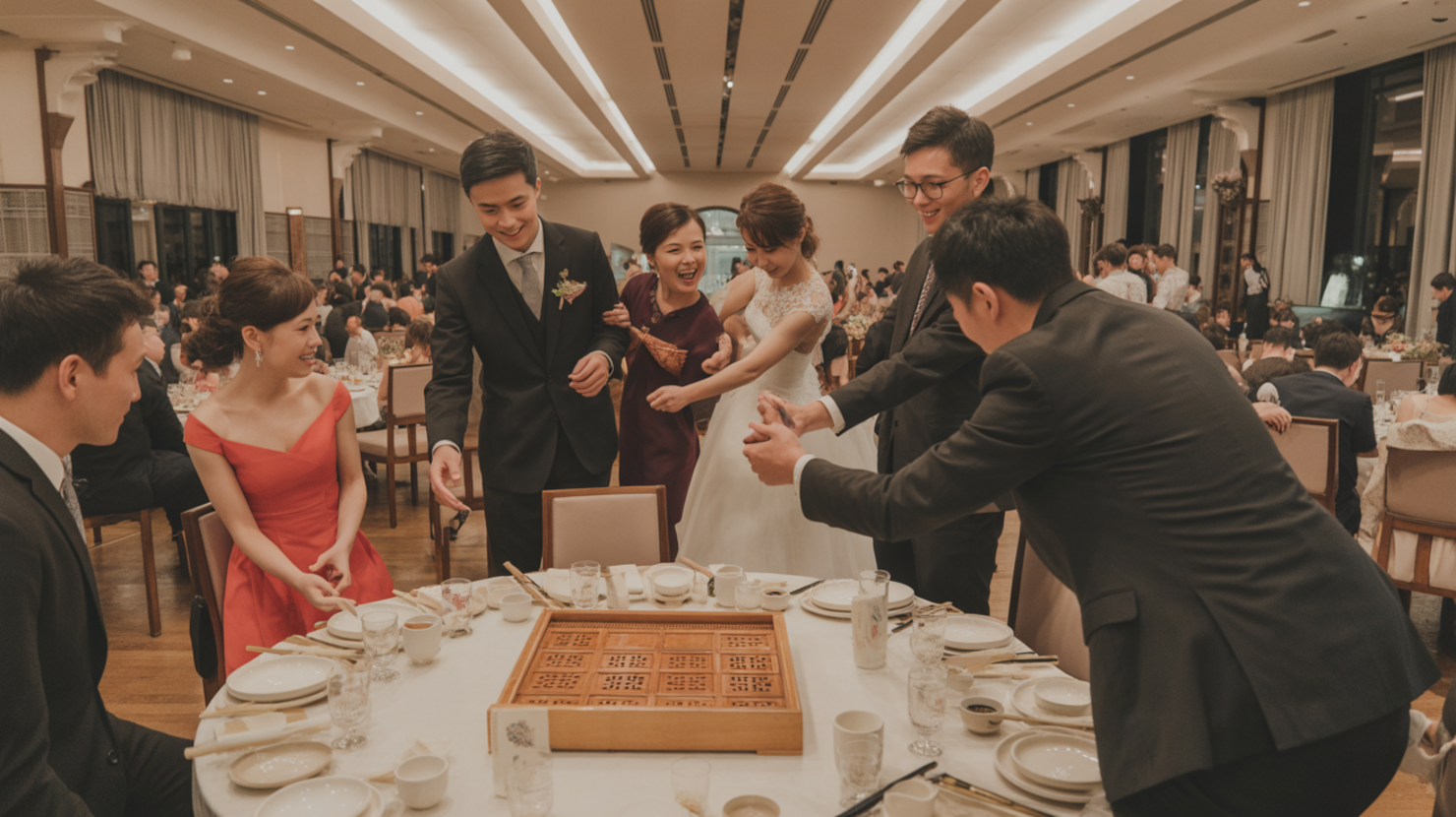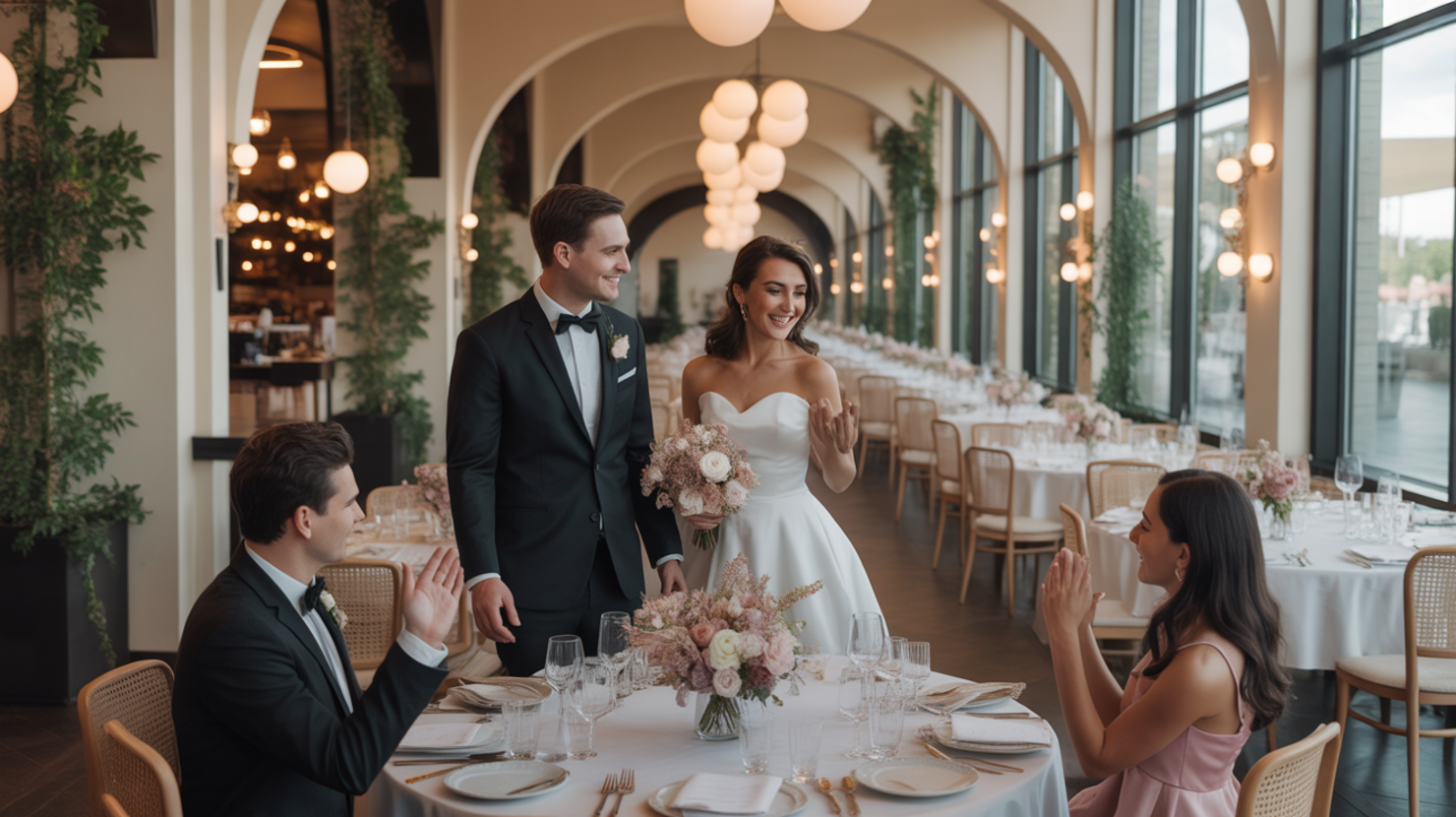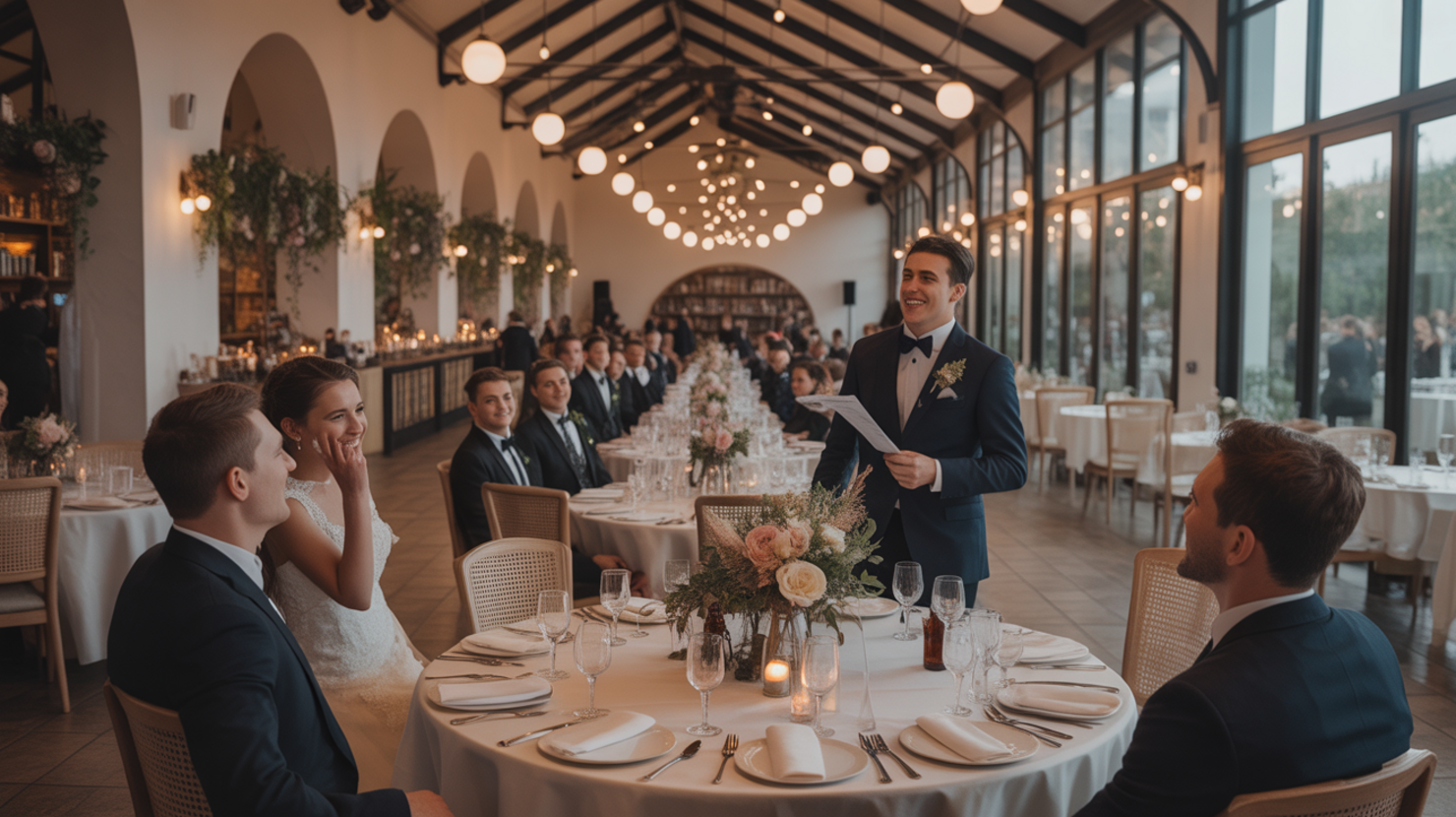Understanding Traditional Chinese Wedding Game Customs
Incorporating traditional Chinese wedding games into a restaurant banquet setting requires a deep appreciation for their cultural significance. These activities are far more than simple entertainment; they are steeped in history and symbolism, serving to bless the couple, test the groom’s worthiness, and bring families closer together in a spirit of joy and camaraderie. Recognizing the purpose behind games like the elaborate “gate-crashing” challenges for the groom and groomsmen or playful tasks performed during the reception is the first step in planning how they can seamlessly integrate into your celebration.
A critical aspect of selecting games for a wedding banquet is their ability to promote guest interaction. Traditional Chinese weddings are communal events, and the games are designed to involve participants and onlookers alike. They create shared experiences, break the ice, and generate laughter, fostering a warm and lively atmosphere that is central to the celebration’s success. Choosing games that encourage participation from various family members and friends enhances the communal bond forged during the wedding. 🎉
Furthermore, it’s vital to align games with banquet timing rhythms. A restaurant wedding reception typically follows a structured timeline, with specific phases for guest arrival, the tea ceremony, the couple’s entrance, multiple dinner courses, and speeches. Games must be strategically scheduled so they complement, rather than disrupt, this flow. Often, lively games are placed earlier in the day or during transitional moments between courses to keep energy levels high without interfering with key ceremonial or dining activities. Understanding these customs ensures the games feel like a natural, joyful part of the wedding, honoring tradition while fitting smoothly into the modern venue setting. For more on the broader context of Chinese wedding traditions, you might find resources like Wikipedia’s page on Chinese wedding traditions insightful.
To effectively incorporate these elements into a restaurant layout, remember the foundational goals:
- Identify key games with cultural symbolism. ✨
- Prioritize activities promoting guest interaction.
- Align games with banquet timing rhythms.
By keeping these principles in mind, you set the stage for a successful blend of cherished tradition and practical venue planning.
Assessing Restaurant Layout Limitations & Opportunities
Utilizing a restaurant venue for a Chinese wedding, especially one incorporating traditional games, presents a unique set of spatial challenges and opportunities. Unlike a dedicated event hall, a restaurant’s layout is primarily designed for dining service, potentially limiting open floor space or the flexibility to rearrange furniture significantly. A crucial first step in planning is a thorough assessment of the venue’s physical characteristics to understand how games can be integrated seamlessly and safely into the existing structure.
Begin by evaluating the dining areas themselves for game setup flexibility. Can tables be temporarily moved or consolidated to create larger open zones? Are there alcoves or slightly separated areas that could serve as designated game stations? Consider the types of games you envision playing – some require more space for movement, while others can be played seated or in smaller clusters. Understanding the restaurant’s willingness and capability to adapt the standard dining setup is key to ensuring adequate space for game activities without disrupting the flow of the event or guest comfort.
Mapping the traffic flow is equally vital. Guests, bridal party members, and staff will need to move between tables, the bar, restrooms, and potentially any designated game or display areas. Games should be positioned so they don’t create bottlenecks or block essential pathways. Visualize how guests will circulate throughout the evening, particularly during transitions between courses or when games are actively being played. Creating clear pathways ensures safety and allows guests to easily participate in activities or move freely without causing congestion.
Don’t overlook underutilized spaces within the restaurant. These might include a spacious foyer, a private dining room not needed for seating, wide hallways, or even aesthetically pleasing corners or alcoves. These areas can be perfect for setting up smaller, less active games, photo booths with cultural props, or cultural displays. These displays could be anything from a traditional tea ceremony setup to a collection of family photos or wedding artifacts, adding cultural depth without requiring significant floor space in the main dining area. Identifying and leveraging these often-ignored zones maximizes the venue’s potential and adds layers to the guest experience. A detailed layout plan, perhaps obtained from the restaurant, can be invaluable for this assessment, allowing you to sketch out potential game zones and pathways. Planning resources like The Knot’s guide on venue layouts can offer general tips on space utilization applicable to unique venues like restaurants.
Strategic Game Selection for Spatial Harmony
Integrating traditional Chinese wedding games into a restaurant venue requires a thoughtful approach to game selection that prioritizes the existing physical space. It’s not enough for games to be culturally significant or entertaining; they must also fit harmoniously within the layout, avoiding disruption and ensuring guest comfort and safety. Choosing games that align with the venue’s dimensions and characteristics is a crucial step in successful planning.
The most fundamental consideration is matching the physical requirements of the games to the venue dimensions. Does a particular game necessitate a large open floor area, a clear path, or a specific setup footprint? Games that involve significant movement, chasing, or require space for elaborate props might be challenging in a restaurant environment with fixed furniture and limited flexible space. Prioritize games that can be contained within smaller zones or adapted to fit the available areas without infringing on dining spaces or essential walkways.
Furthermore, the table spacing and arrangement are key determinants in choosing between seated games and mobile games. If tables are closely packed, encouraging guests to move extensively between them for a game is impractical and can cause congestion. In such layouts, games that can be played primarily from the guests’ tables or involve minimal movement within a designated small area are preferable. Conversely, if the venue boasts more generous spacing or dedicated open areas, you have greater flexibility to incorporate games that involve guests circulating or gathering in a specific zone.
Don’t overlook the vertical aspect – ceiling height plays a role too. Games that involve hanging elements, require participants to reach upwards, or use props that are tossed might not be suitable under low ceilings. High ceilings, however, can offer unique possibilities for incorporating visually engaging game elements or decorations that utilize the vertical space. Always consider how game activities might interact with overhead fixtures or decorations.
Successfully incorporating games means selecting ones that are not just fun but are also practical within the restaurant’s layout. By considering these key spatial factors – dimensions, table spacing, and ceiling height – you can ensure the chosen games enhance the wedding atmosphere without creating logistical headaches. ✨
Adapting Games for Commercial Kitchen Proximity
When incorporating dynamic Chinese wedding games into a restaurant setting, a key consideration is the venue’s operational heart: the kitchen. Commercial kitchens are busy, high-activity zones with specific safety protocols. Integrating games nearby requires careful planning to ensure both guest safety and the smooth operation of the restaurant staff.
Food-related games, a staple in many traditional celebrations, need significant modification. While fun, activities involving handling food directly must adhere strictly to food safety and hygiene standards. This means avoiding scenarios where guests might handle unwrapped ingredients or share utensils directly. Instead, focus on games using pre-portioned items, individually wrapped treats, or activities where guests interact with sealed containers or visual cues. Always consult with the restaurant’s kitchen manager or event coordinator to understand their specific protocols and identify acceptable practices. For instance, a tasting challenge could use small, covered sample cups rather than open trays. Prioritizing cleanliness and minimal direct guest contact with food preparation areas is paramount.
Creating clear buffer zones between the game areas and kitchen entrances, service doors, or high-traffic staff corridors is crucial. Restaurant kitchens involve hot surfaces, sharp objects, and staff moving quickly with trays and equipment. Setting up games too close poses a risk of accidents. Use strategic placement of decorations, furniture, or even temporary stanchions to guide guests away from operational areas. This separation also helps maintain the flow of service and prevents game noise or activity from disrupting kitchen communication or dining guests seated nearby. Think about potential sightlines and sound bleed when deciding where games will be staged.
Finally, consider the scent profile of games located near the kitchen. Strong cooking aromas, cleaning product smells, or the general heat and humidity from the kitchen can interfere with certain types of games. Activities that rely on guests’ sense of smell or taste, such as blindfolded tasting challenges or scent identification games, are best located further away in areas with neutral air. Near the kitchen, opt for games that are primarily visual, auditory, or physical, such as trivia, charades, or prop-based challenges that don’t rely on delicate sensory perception. This thoughtful placement ensures the games remain enjoyable and function as intended despite the ambient environment.
Lighting & Sound Considerations for Immersion
Beyond selecting the perfect games and planning their placement within the restaurant, creating a truly immersive atmosphere hinges significantly on lighting and sound. These elements don’t just set the mood; they are critical tools for guiding guest attention, enhancing game participation, and ensuring a smooth, enjoyable experience throughout the wedding banquet.
One key aspect is finding the right balance between ambient restaurant lighting and game-specific effects. Restaurants often have established lighting schemes designed for dining. While these can contribute to a warm atmosphere, they may not be ideal for spotlighting game areas or creating necessary visual cues. Consider where house lights might need to be dimmed or augmented. Portable lighting fixtures, spotlights, or even simple uplighting can help highlight the game zone and make props or instructions clearly visible, ensuring guests can easily follow along without feeling like they’re in a dark corner. ✨
Controlling audio levels for simultaneous activities is another significant challenge in a busy restaurant. You’ll have guests chatting, staff moving, kitchen noise, background music, and potentially multiple games happening or announcements being made. A well-planned sound strategy is vital. This might involve using separate, smaller sound systems for specific game areas if the main venue system is too general. Ensure microphones are available for game hosts or MCs so instructions are clear above the din. Managing background music volume is also key – it should complement, not compete with, game sounds or announcements.
Finally, using directional lighting to define game boundaries is a clever way to manage space without physical barriers. A focused beam of light, a change in color, or even a simple gobo (a stencil used with a light to create patterns) can signal to guests where a game is taking place and subtly suggest the perimeter of the play area. This is particularly useful in open restaurant layouts where spaces flow into one another. It helps create a visual stage for the activity, making it more engaging and preventing accidental interference from guests passing by.
By carefully planning how lighting and sound will support each specific game, you can significantly elevate the guest experience, making the traditional Chinese wedding games not just activities, but memorable, immersive highlights of the celebration. For more resources on event production, you might explore guides on technical elements in hospitality venues.
Staff Training for Cultural Activity Coordination
Integrating vibrant Chinese wedding games into a busy restaurant venue requires more than just clever layout planning; it demands a highly competent and well-prepared staff. Restaurant teams are experts in service and hospitality, but coordinating interactive cultural games presents a unique challenge. Proper staff training is the unsung hero that ensures these activities run smoothly, safely, and respectfully, becoming a highlight of the celebration rather than a logistical hurdle.
A critical component of this training involves developing multilingual game briefing protocols. Guests may speak various languages, and clear communication is paramount for participation and enjoyment. Training staff to deliver simple, concise instructions, perhaps using visual aids or demonstrations, can bridge language barriers. Having key phrases ready or designating staff members proficient in relevant languages ensures that everyone understands how to play and the cultural significance behind the activity. This makes the games accessible and inclusive for all attendees.
Furthermore, effective prop management between courses is essential in a dining environment. Games often involve various items, from simple cards to more elaborate props. Staff need training on how to handle these materials efficiently and discreetly, storing them safely when not in use and deploying or clearing them quickly without disrupting food and beverage service. Learning to manage props seamlessly during the natural lulls or transitions between meal courses is vital for maintaining a professional atmosphere and keeping the event flow smooth.
Finally, preparing staff with emergency reset plans for quick transitions is crucial for anticipating and handling unexpected issues. What happens if a game prop breaks? If a game runs significantly over or under time? Training should cover troubleshooting common problems, having backup props or alternative activities ready, and understanding how to quickly wrap up an activity and transition to the next agenda item or back to service. The ability for staff to react swiftly and effectively ensures that minor hitches don’t derail the celebration’s momentum, preserving the overall positive guest experience. Well-trained staff are the backbone of successfully blending dining service with dynamic cultural games.
Modern Tech Enhancements for Classic Games
Integrating modern technology into classic Chinese wedding games can enhance the guest experience and streamline logistics in restaurant venues. Far from detracting from tradition, strategic tech applications make these beloved activities more accessible, engaging, and visually spectacular for contemporary guests.
One simple yet powerful tool is the use of QR codes. These can be placed on tables or screens, allowing guests to quickly access game rules, vote on outcomes, register participation, or even submit answers directly from their smartphones. This approach dramatically simplifies management compared to manual sign-ups or paper ballots, making participation smoother and less disruptive in a busy dining environment. Learn more about how QR codes work.
For venues with limited floor space, projection mapping offers an innovative space-saving solution. Instead of large physical props or backdrops, dynamic visuals related to the games or cultural themes can be projected onto walls, floors, or even tables. This creates an immersive and visually stunning environment that changes instantly, adds an element of surprise, and requires no physical footprint beyond the projector setup. Explore the possibilities of projection mapping technology. ✨
Managing scores during competitive games is made effortless with discreet wireless scoring systems. Using dedicated apps or simple web interfaces, scores can be updated in real-time and displayed on screens visible to all guests. This eliminates the need for manual scorekeepers shouting updates or displaying large, cumbersome scoreboards, ensuring game progress is clear and fair with minimal fuss.
By thoughtfully incorporating these technological tools, planners can enhance traditional Chinese games, ensuring they are culturally resonant, dynamic, interactive, and perfectly suited for the modern restaurant setting, boosting overall guest engagement and event flow.
Balancing Tradition With Contemporary Guest Expectations
Successfully integrating traditional Chinese wedding games into a restaurant venue requires more than just finding space; it demands a thoughtful balance between honoring heritage and catering to the expectations of today’s modern guests. This involves innovative approaches to how games are designed, presented, and made interactive within the specific constraints and opportunities of a commercial dining setting.
One key strategy is designing hybrid digital-physical game experiences. Instead of strictly paper-based or prop-dependent games, incorporate technology to enhance classic traditions. Think about using QR codes for interactive clues during door games, employing a digital display for live leaderboards in guessing games, or using apps for guest participation and responses. This blend maintains the cherished physical components and social interaction while adding a dynamic, accessible layer that resonates with tech-savvy attendees, making the games feel fresh and engaging. For ideas on integrating tech, explore resources on Wedding Tech Trends.
Making games Instagrammable cultural moments is crucial, especially when working with potentially tight spaces common in restaurant layouts. Focus on creating visually appealing setups for key game activities. Use vibrant backdrops, culturally significant props, and strategic lighting to highlight the action. Even a small area can become a focal point for photos if designed well. This encourages guests to capture and share their experience, turning participation into memorable, shareable content and celebrating the cultural elements beautifully. Learn more about capturing these moments from resources on Making Your Wedding Instagram-Ready. 📸
Finally, consider developing modular game kits for multi-event reuse. For restaurant venues that host numerous weddings, this approach is highly practical. Design game components that are durable, easy to set up and pack down, and versatile enough to be used for different games or events. Modular props, interchangeable game boards, or digital templates reduce waste and simplify logistics for venue staff. This allows the restaurant to consistently offer engaging, culturally rich game options without significant effort or cost each time, making the integration seamless and sustainable within the venue’s operational flow.
By thoughtfully blending tradition with contemporary design and technology, wedding games in a restaurant venue can be both deeply meaningful and thoroughly entertaining for everyone involved. 🎉



